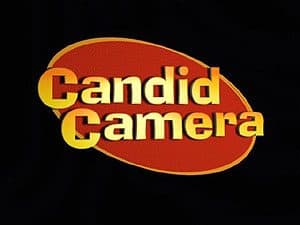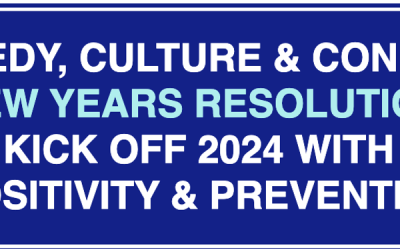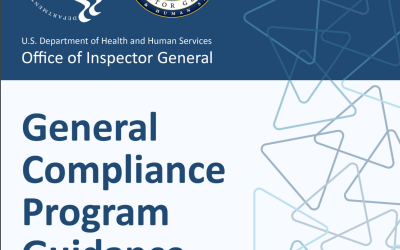I’m old enough to know who Alan Funt is without having to look it up on Wikipedia. For those of you not in the know, Candid Camera was a popular prank shows prior to Punk’d, Impractical Jokers and the like. A client of mine sent me this clip to discuss the perils of groupthink and now I’m thinking about this particular show with a fresh eye.
The powers of conformity and groupthink can be subtle, but powerful. We are all influenced by our surroundings whether we realize it or not. I am continually amazed by the number of executives who see themselves as only passive participants in their corporate culture. They don’t seem to recognize that they are an integral part of it and they are influencing that culture every day…sometimes positively and sometimes not so much. If you are in one of those “conservative,” “negative,” “we-have-always-done-it-this-way-and-always-will” environments, you can reflexively conform or choose to actively influence that culture by choosing to communicate differently.
For leaders, corporate educators and other positions of influence (Ethics & Compliance, HR, Learning & Development, Privacy & Info Security, Corporate Communication), the way you communicate with emails, newsletters, training, policies, meetings and conversations can have a tremendous ripple effect on the entire organization. Will employees conform to a negative influence – “This isn’t right but I’m going to go along with it anyway because everybody does it.” Or a positive influence – “This isn’t right and I’m going to speak up about it because that’s not who we are.” Your style of communication – positive or preachy, and your frequency of communication – annual or ongoing, combined can lay down a foundation for how the group will react and respond to you and your team. And that can have a halo effect on workplace behavior.
Integrity and the “Big Brother Eyes Study”
I found this study to be pretty interesting. In 2006, a team from Newcastle University conducted an experiment where they provided a coffee and tea service, posted a price list and asked people to drop payment into an “honesty box.” They rotated different pictures on the wall in the background and measured the change in payment patterns. What they found was that payment increased significantly (3x) when there were picture of faces or eyes in the background. It suggests that people behave differently when they believe they are being watched, because they are worried what others will think of them. I’m not an advocate of big brother watching techniques, but I do believe that we are influenced by our social environment and what others will think of us. (See Candid Camera example above) And perhaps most importantly, groupthink can work for you or against you. This is where leaders and people of influence in the organization should have their focus as a way to mitigate risk by creating an environment that polices itself.
When it comes to honesty and integrity, people need to be reminded. It’s not that telling someone to have integrity will automatically make them have it. It’s more of an acknowledgment that we all think we have integrity, but we are intelligent human beings who are really good at justifying our own behaviors, particularly the bad ones. Integrity is something that people have to actively work at every day. We’re all judged by our actions not our intentions.
Communicate Colorfully: Core Values * Code of Conduct * Speak Up Culture
Every company has a code of conduct and a set of core values that are meant to be a statement for who they aspire to be as an organization. They tend to be quite similar with many variations on the same theme. “We operate with the utmost integrity.” “We treat our coworkers and clients and vendors with respect.” “You can do this.” “You can’t do that.” More often than not, these end as lonely documents that are rarely accessed or boring posters that turn into faded wallpaper or training courses that make you want to claw your eyes out. These are all important topics that when combined with poor choices of communication, in effect gives them no power of influence or perhaps even generates a negative impact. If you bore people, waste their time, nag and wag the finger at them, they will resent you for it. And when the time comes, whether we realize it or not, they won’t think of the Code or Core Values or other important policies as they make a poor choice because they feel “they deserve it” and “everybody does it.”
This where we can all have an influence. We can choose to have an active hand in influencing our culture by choosing to communicate interestingly, colorfully, with an open hand and more frequently. We need to regularly, proactively and positively remind and reinforce what’s important to us, to increase the likelihood that these messages will break through to improve the odds of groupthink working to your advantage.
Positivity & Fun – Take your work seriously but don’t take yourself too seriously. Are you communicating by scaring people – “do this or else.” Are you nagging and wagging your finger at them? According to The Fun Theory the best way to change behavior is through the power of fun. When we laugh, we relax and our capacity to retain information expands – Laughter & Learning
Approachability – Are you and your team people that employees will approach with a question or a problem? Do you have the reputation (earned or not) as a coach or the cops? You may have to be both, but you can’t educate and influence behavior if people are indifferent or afraid. You first need to work at making your team, your policies and your trainings more accessible and approachable.
- There are some great improv-based skills building workshops that can help your team develop a “Yes-And” mentality. Improv Workshops
- Are your policies, trainings and resources created to engage and help employees learn? Does it respect their time and intelligence? These are your calling cards that establish your reputation. They’ll make you approachable or they won’t. Culture, Code & Speak Up Suites
Effective Frequency – Training isn’t enough. 87 percent of corporate learning is lost within the first month. People need to be exposed to a message several times before they tend to remember. There is benefit in more regular, positive, proactive communication as way to influence corporate culture.
I love the idea that we all are Alan Funt doing the elevator experiment in our own companies. The experiment is actually going on whether we acknowledge it or not. The question is, are we going to take an active hand in shaping it to our mutual benefit.
——
To read more posts, visit Thoughts While Shaving
Check out the new L&E Culture, Code & Speak Up Suites
L&E Creative Communications – Comedy, Communication, Corporate Education




